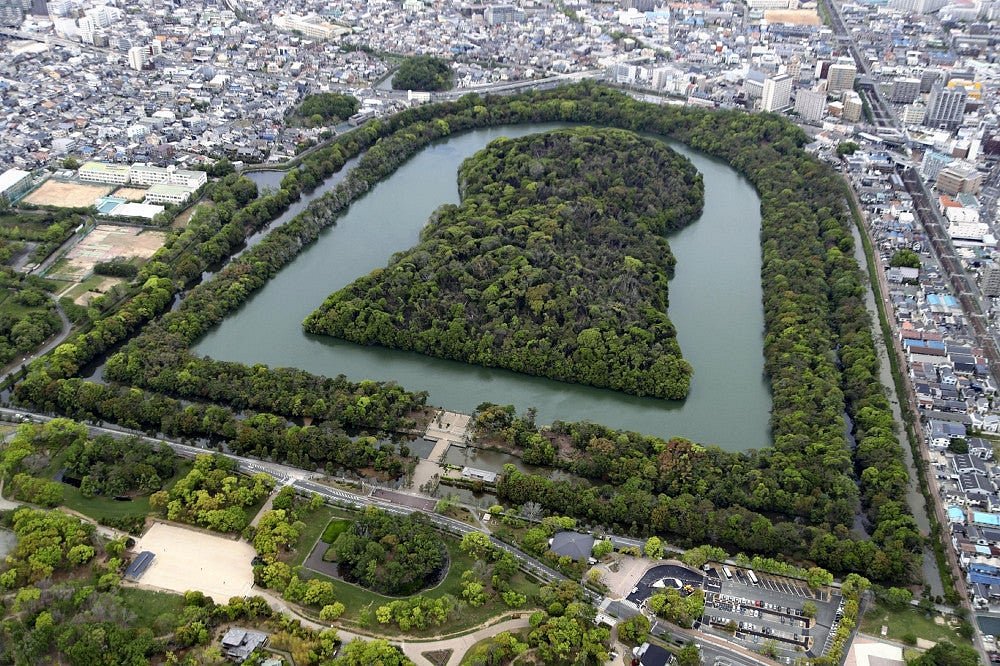What do you think of when someone tells you about Japan? The first few things that come to mind would probably be the food – sushi and sashimi, ramen, and udon. Some of us would probably think of its culture, where modernity meets tradition. Without the ancient history of Japan, many of the things we identify with Japan would not exist.
The rich history of Japan often gets overshadowed by the equally-rich history of neighbouring China and Korea. Many aspects of Japanese culture originated from ancient Japan. However, to understand the Japanese culture, we must first find out how it came to be. That said, let us discuss the history of ancient Japan – the Jōmon period, the Yayoi period, and the Kofun period.
Jōmon Period
The longest and the most uncertain period in the whole of Japanese history, the Jōmon period (縄文時代, Jōmon Jidai), marks the formation of societies in Japan. While the dates of this era are widely debated, it is generally accepted to be from around 14,000 to 300 BCE.
The Jōmon people were initially hunter-gatherers then agriculturalists. However, you may be surprised to find out that the Jōmon people consist of multiple ethnicities. It is difficult for us to determine their genetic relationship with the modern-day Japanese, Ryūkyūans from Okinawa and the Ainu from Hokkaidō and Sakhalin.
Culture of Jōmon
Across the Japanese archipelago, there is much evidence of Jōmon settlements, from the Ryūkyū Islands in the south to Hokkaidō in the north. Such evidence included pottery, which is generally believed to have been invented in present-day China. Since pottery is heavy and bulky, it is generally used to indicate sedentary lifestyles. So, why are hunter-gatherers using them? The natural environment in the Japanese archipelago is abundant in food sources. This suggests that the Jōmon people are probably semi-sedentary, relying on fishing as their primary food source.
In the last millennium of the Jōmon period, there were increased instances of contact with mainland Asia, especially the Korean peninsula. Increased contact resulted in Korean-type settlements in Kyūshū. With new farming techniques, metallurgy, and pottery styles, the Jōmon period began to move towards a farming-based culture – the Yayoi period.
Yayoi Period
Similar to the Jōmon period, nobody knows the exact dates of the Yayoi period (弥生時代, Yayoi Jidai). However, it is widely accepted to be from 300 BCE to 300 AD. The late Jōmon period and the early Yayoi period spread across multiple centuries, and this occurred as ancient Japan transitioned from a hunter-gatherer civilisation into an agricultural society.

The Yayoi people were much more advanced than their predecessors – buildings were built in permanent farming villages using wood and stone. The Yayoi society also featured differences in social classes and traded with bronze and other prestige items. Many of such technologies originated and were influenced by mainland Asia. Compared to the previous period, there was a significant increase in the population of the Yayoi period.
Around this period, neighbouring China was in its early imperial era, with the Qin and Han dynasty and the Three Kingdoms occurring during the Yayoi period. Contacts between China and Japan were logged in Chinese records called Japan Wo (倭, Japanese Wa). Civil war during the late Yayoi period occurred in Kyūshū but ended with the control of Queen Himiko.
Yayoi Culture
Just like what we have mentioned earlier, there were increased contacts between the early Japanese and early Koreans, which was seen in fishing communities trading. Many aspects of the Yayoi culture were influenced by the early Korean and Chinese cultures. During this period, the Japonic language family began to take influence within the Japanese archipelago.
The Wa people ate rice, vegetables, and raw fish based on ancient Chinese sources. They used bamboo and wooden utensils to serve meals. Like present-day Japanese culture, the Wa people would worship the Kami (Gods) by clapping their hands. The late Yayoi period saw a shift from a tribal agricultural society into a period of strong cultural influence from mainland Asia. This eventually led up to a new period – the Kofun period.
Kofun Period

The shortest period in the history of ancient Japan, the Kofun period (古墳時代, Kofun Jidai) spanned from 300 AD to 538 AD. Its name stems from tombs built during this era. The Kofun tombs are distinctive earthen mounds, sometimes surrounded by moats, with stone chambers made for burial. There are four different types of Kofun tombs, with the keyhole-shaped tombs being unique to Japan. Like the terracotta army in China, Kofun tombs occasionally came with Haniwa figures buried under their circumferences.
The Yamato court came to influence during the Yayoi-Kofun transition in 250 AD. The Yamato established relations with China, with significant material culture implying the political and economic contact between the two countries. One such example would be the discovery of bronze mirrors in both Kyūshū and Korea. These bronze mirrors were made from an identical mould.
The Yamato court dominated the southern parts of the Japanese archipelago. Most of the areas in modern-day Kansai, Chūgoku, and north Kyūshū were under the control of the Yamato court. The Yamato court suppressed other clans and obtained land for farming. They also often got local leaders to rule over their land, providing these local leaders with influential positions within the Yamato government in exchange. This marks the gradual unification of the many different settlements throughout the archipelago.
Culture of Kofun
Many foreigners settled in Japan from abroad during the Kofun period, especially the mainland Chinese. Often referred to as Toraijin, these people were treated specially due to their knowledge of the Chinese culture. There were also many Korean settlers, including royalties from the Korean Kingdoms of Baekje and Silla.
The early Japanese language was written in Chinese characters, and this was due to significant influence from neighbouring China and the large numbers of Chinese settlers. However, their pronunciation is different from what they are today. Historical accounts were written in Japanese, Chinese, and Korean using Chinese characters.
With the Yamato establishing an imperial dynasty at the end of the Kofun period, the ancient history of Japan drew to a close. The Kofun period was succeeded by the Asuka period in 538 AD. This marks the start of a new era in the history of Japan – Classical Japan.
Classical Japan
So, what was the trigger that caused a shift in the history of Japan? The answer lies in the introduction of Buddhism to Japan from the Korean Kingdom of Baekje. In contrast with ancient Japan, classical Japan featured the evolution of the language and arts of Japan. There were also many significant social and political changes within the Japanese archipelago during classical Japan compared to ancient Japan.
With the move from ancient to classical Japan, there is a change in its name from Yamato to Nihon. Permanent capitals were also set up at Asuka in modern-day Nara prefecture, then Nara, before moving between Kyōto and Nagaoka in Kyōto prefecture. There was also a major shift in the culture of the Japanese people.
With that, we can all agree on the importance of the history of ancient Japan and its significance in shaping Japan to be what it is today.





Add comment